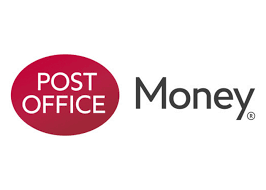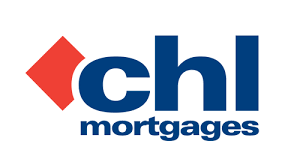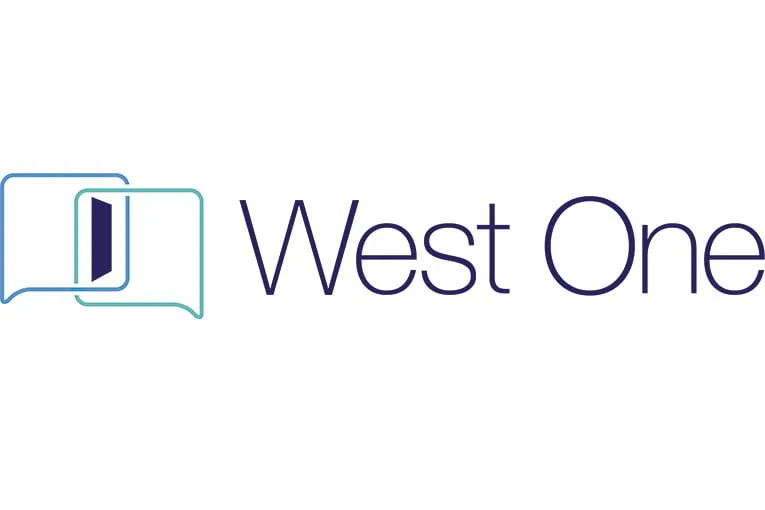Remortgaging with an Early Repayment Charge (ERC): Smart Strategy or Costly Move?
Remortgaging can reduce monthly payments, access equity, or get a better mortgage term. One of the main reasons homeowners consider remortgaging is to save money, either by securing lower interest rates or obtaining better terms.
But if you’re on a fixed-rate deal, you might face an Early Repayment Charge (ERC). This article explains what ERCs are, how to assess whether you should pay one, and how to make the best decision for your home and finances, emphasising the importance of weighing the potential savings against the costs, including ERCs.
What is an Early Repayment Charge (ERC)?
An ERC is a fee applied by lenders when you repay part or all of your mortgage early, especially during a fixed-rate or introductory period. ERCs are typically calculated as a percentage of the outstanding mortgage balance at the time of repayment. Charges typically range between 1%–5% of the remaining balance, and often decrease annually throughout the fixed term.
| Fixed-Term Year | ERC for £200,000 Balance (5%) |
|---|---|
| Year 1 | £10,000 |
| Year 2 | £8,000 |
| Year 3 | £6,000 |
| Year 4 | £4,000 |
| Year 5 | £2,000 |
By the third year of a five-year fixed term, the ERC is significantly reduced, making it a more attractive time to consider remortgaging.
Why it matters: The longer you stay in your fixed-rate term, the smaller the ERC. This incentivises waiting until later in the deal to remortgage.
Remortgaging Costs Beyond ERCs
While early repayment charges are often the most talked-about cost when remortgaging, they’re far from the only expense to consider. Other costs involved can include arrangement fees for the new mortgage, valuation fees to assess your property’s value, and legal fees to handle the paperwork.
Some mortgage lenders may offer incentives like cashback or free valuations to help offset these costs, but it’s important to look at the overall value of the deal rather than just the headline rate.
A mortgage broker can help you understand the full range of fees and incentives, so you can make an informed decision about whether remortgaging is right for you and which deal offers the best value for your needs.
Arrangement Fees and Other Upfront Charges
Arrangement fees sometimes called product fees are charges set by mortgage lenders to cover the costs of setting up your new mortgage. These fees can range from £1,000 to £2,000, and you’ll usually have the option to pay them upfront or add them to your mortgage balance (though adding them means you’ll pay interest on the fee).
In addition to arrangement fees, you may face valuation fees, which typically range from £300 to £500, depending on your property and the lender’s requirements. Legal fees are another upfront cost, often around £300, to cover the legal work involved in switching your mortgage.
When remortgaging, it’s important to factor in all these costs, as they can impact the overall savings you achieve. A mortgage broker can help you compare deals and find options that minimize your upfront costs while still delivering the benefits you’re looking for.
When Paying an ERC Can Be a Smart Move
1. Interest Rate Savings
If your new mortgage rate is much lower, you could save more over the remaining term than the ERC and associated fees cost. For example:
- Current rate: 5%
- New rate: 3%
- Loan balance: £200,000
- Monthly saving: ~£330
- ERC: £6,000
- Break-even: ~18 months
If you plan to stay in the home longer, the savings outweigh the upfront cost, and remortgaging even with an ERC can help you save money in the long run if the new rate is significantly lower.
2. Getting the Right Mortgage Type
Switching from an interest-only or variable mortgage to a fixed repayment mortgage, or between different mortgage products that better suit your needs, might be worth paying the ERC for stability and to begin paying down your capital.
3. Releasing Equity or Consolidating Debt
If remortgaging allows you to borrow more money such as consolidating high-interest debts or accessing funds for home improvements, the long-term financial benefits may justify the ERC.
4. Protection Against Rate Increases
If interest rates are rising, switching to fixed rate mortgages even if it means paying an ERC can provide budget certainty and long-term peace of mind.
When to Avoid Paying an ERC
- Minimal rate difference: If savings are only a few pounds a month, it may take years to recoup the ERC.
- Near the end of fixed-term: If just a few months left, it’s important to know exactly when your current deal ends. Waiting until your existing deal finishes allows you to switch deals without incurring an early repayment charge (ERC).
- Financial uncertainty: If your income is variable or under pressure, taking on extra costs may be unwise.
- Large ERC relative to your savings: Always compare total costs versus benefits.
Calculating Your Break-Even Point
- Calculate total costs: ERC (usually a percentage of your outstanding balance) + fees (valuation, legal, product fee)
- Estimate monthly savings: Difference between old and new mortgage payments. Be sure to compare the potential savings from the new deal against the total costs.
- Find payback period: Costs ÷ monthly savings
- Compare with your timeline: If you plan to stay beyond the payback period, it may be worthwhile
Example Breakdown
- ERC + fees: £7,500 (ERC is often paid as a lump sum at the time of remortgaging)
- Monthly saving: £350
- Break-even: 21 months
If you’re staying for over 4–5 years, this could result in significant long-term savings.
ERC Policies by Lender (2025 Update)
ERC-Free Products
| Lender | Product | LTV Limit | ERC | Notes |
|---|---|---|---|---|
| Hinckley & Rugby | 2‑Year Discount (Core & Flex) | Up to 80% | £0 | No ERC, £999 product fee; ideal for flexibility |
This type of product suits borrowers who want freedom to remortgage or overpay without penalties.
While many first mortgage deals often come with early repayment charges (ERCs), some ERC-free products like this offer greater flexibility for remortgaging or making overpayments.
High-Street & Building Society ERC Structures
| Lender | ERC Format | Typical Stepping Pattern | Notes |
|---|---|---|---|
| Nationwide | Stepped | 5% → 4% → 3% → 2% → 1% | 10% annual overpayment usually allowed |
| Santander | Stepped | 5% → 3% → 1% | ERC often waived for internal switches |
| Barclays | Flat or stepped | 2–5% | Admin fee sometimes added, which may include costs for transferring title deeds when changing lenders |
| HSBC | Stepped | 5% → 4% → 3% → etc. | Clear illustrations provided |
| Lloyds | Stepped | Follows standard group pattern | |
| Coventry BS | Stepped | 5% → 3% → 1% | Flexible for existing members |
| Virgin Money | Variable | Varies by deal | Internal transfers may avoid ERC |
Tip: ERC structures vary by lender, deal, and LTV, so always check your mortgage illustration or ESIS. If you switch or repay your mortgage before your deal ends, you may need to pay an early repayment charge.
How to Minimise or Avoid ERCs
- Port your mortgage when moving home (if the current lender allows it)
- Time your move for later in the fixed term when ERC is lowest
- Switch mortgages or switch deals at the right time to avoid early repayment charges, planning ahead can help you remortgage or change deals as soon as your current term ends, minimising costs.
- Stay with the same lender through a product transfer this can sometimes help you avoid early repayment charges, as some lenders waive ERCs for product transfers.
- Overpay up to 10% yearly without triggering an ERC
- Choose ERC-free products for maximum flexibility
2025 Regulatory Updates
The FCA is proposing simpler affordability criteria for remortgages involving rate reductions or shorter terms, reducing paperwork and improving approval likelihood.
If you are considering remortgaging or exploring new mortgage deals, seeking advice from a mortgage broker or adviser can help you understand how these regulatory changes may impact your available options and ensure you secure the most suitable deal.
Additionally, more lenders are offering ERC-free options and more borrowers are prioritising flexibility over small savings in rate.
Is Paying an ERC Right for You?
Yes, if:
- Expected savings exceed ERC and fees within your timeframe
- You need product flexibility or want stability
- You’re consolidating debt or releasing equity
- You’ve assessed your property’s value or equity and it supports your remortgaging goals
- You’ve considered whether staying with your current mortgage provider or switching to a new one offers better terms for your situation
No, if:
- You’re near the end of your current deal
- Savings are minimal or financial circumstances are uncertain
- ERC is high compared to your expected benefits
- Staying with your current mortgage provider offers better continuity or incentives than switching, or your property’s value does not justify the change
Next Steps: Expert Advice Matters
Our mortgage advisers will:
- Analyse your ERC, new deal rate, and break-even timeline
- Compare ERC-free and low-ERC options
- Provide guidance on timing, porting, or waiting strategies
- Tailor advice to your circumstances
- Help you understand all costs involved, including the valuation fee, when remortgaging
As a whole-of-market brokerage, we can match you with the best deal based on your goals. Contact us at 01332 470400 or fill out our callback form for a personalised review.
What our customers say
Marlon
25 Apr 2025
Showing our favourite reviews

Always attentive, helpful and efficient
Jonathan, 27 Jan 2025

Best Mortgage Broker in the UK!
Liam, 26 Nov 2024

Ben was really helpful in helping me…
George, 28 Aug 2024
FAQs
What is an early repayment charge (ERC) on a mortgage?
An early repayment charge (ERC) is a fee your lender may charge if you pay off your mortgage early or switch to a new deal before your fixed or introductory term ends. It’s typically a percentage of the outstanding loan—usually between 1% and 5%, and it often reduces each year during the fixed-rate period.
Should I remortgage if there’s an early repayment charge?
It depends. If the savings from a lower interest rate outweigh the ERC and fees, remortgaging may still be a smart move. Use a break-even calculation: divide the total cost (ERC + fees) by your expected monthly savings. If you plan to stay in the property beyond that break-even point, paying the ERC could still save you money.
How can I avoid paying an early repayment charge when remortgaging?
To avoid or reduce an ERC:
Wait until your fixed-rate ends
Use a product transfer with the same lender (ERC often waived)
Overpay up to 10% annually without triggering a charge
Choose ERC-free products for more flexibility
Port your mortgage if you’re moving home
Is it worth paying an ERC to remortgage early?
Paying an ERC may be worth it if:
You’re moving to a significantly lower interest rate
You’re consolidating debt or releasing equity
You want to switch to a fixed-rate mortgage before rates rise
Always calculate total costs and compare against your future savings with help from a mortgage broker.
Do all mortgage lenders charge ERCs?
Most fixed-rate and tracker mortgages come with ERCs, but some lenders offer ERC-free products. For example, Hinckley & Rugby’s Core Flex product has no ERCs, offering more flexibility for overpayments or early switching. Always check the mortgage illustration (ESIS) for your lender’s ERC policy.
Ready to Take the First Step?
Whether you’re a first-time buyer, remortgaging, or moving home, bad credit doesn’t have to hold you back.
Understanding credit scoring can help you prepare for a mortgage application. You can speak to one of our specialist mortgage brokers who would be able to guide you through the process. They will advise if there is a lender available and the maximum loan amount based on your circumstances. We are a whole of market mortgage brokerage with access to all lenders.






























